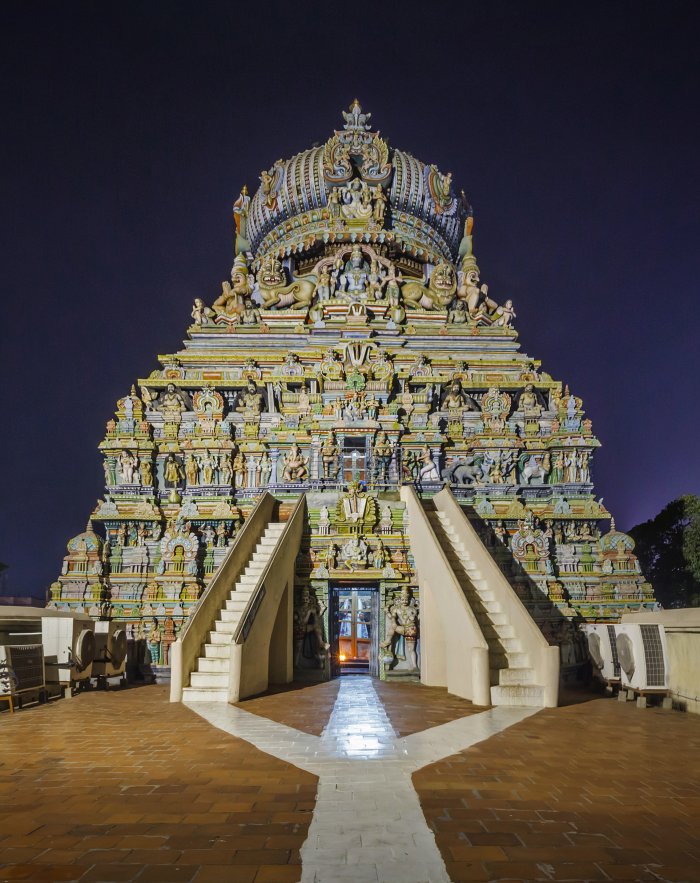Vishnu: Supreme, Universal Hindu God Whose Avatars Reach Nations, Cultures And Races
A. Sutherland - AncientPages.com -In Hindu beliefs, the three gods Brahma, Shiva, and Vishnu, are worshiped as the Great Trinity (Trimurti). They are all generally equal in their power and influence. They represent three aspects: creation, preservation, and destruction.
Vishnu seated on Ananta, facing West (direction of the waters). Second porch. Shrine excavated. Cave 3, Badami, Karnataka. End of the 6th century. Image credit: Ismoon - CC BY-SA 4.0
Observing the Hindu Trimurti, we see Brahma, the creator, looking to the left; Vishnu, the preserver, looks straight ahead, while Shiva, the destroyer, looks to the right.
Vishnu Chief God In Hinduism
The Hindu trinity symbolizes perfection, where Brahma is associated with strength and power; Shiva wins the war thanks to his brutality and impetuous, ruthless character, and Vishnu is a loving God with a special place in the hearts of his believers.
The Hindu god Vishnu is the pervader ("one who is everything and inside everything"), protector, and preserver as he is connected to sacred nature. The mountains are his bones, the clouds hair on his head, the air his breath, the rivers his blood vessels, and the trees are the hairs of his body. We must not forget his eyes represent the sun and the moon, respectively, where the movements of the eyelids symbolize the transition between day and night.
Vishnu is usually depicted with light blue skin and four arms. He is the beautiful guardian of life, light, fire, and water. In four hands, he holds his attributes: a lotus (the symbol of purity and creativity), a club, which symbolizes time. A wheel is a symbol of the cycle of existence, and a conch (shankha), represents a source of all things.
 Kalki Avatar (Image courtesy of Late Sri G. K. Haldipurkar and Aniruddha Haldipurkar, Karwar.) Image credit: Raja Ravi Varma - Public Domain
Kalki Avatar (Image courtesy of Late Sri G. K. Haldipurkar and Aniruddha Haldipurkar, Karwar.) Image credit: Raja Ravi Varma - Public Domain
Vishnu usually wears a pitambara, a unique garment of gold that symbolizes the Vedas; it is said that the divine light of Vishnu shines through his beautiful garment in the same way as the light of truth radiates through the holy words.
He rides on the eagle Garuda, a heavenly bird with four arms and multi-colored wings, and usually rests, floating on Ananta, on the snake Ananta ("Endless" or "infinity") on the primeval waters. Lord Vishnu is often accompanied by his consort, Lakshmi, the Hindu goddess of fortune and the manifestation of Vishnu's energy.
On the forehead, Vishnu has a mark that looks like a U. There are millions of people who worship Vishnu. Those who do so often have the same brand on their foreheads. The mark is drawn there with ash or color.
As the supreme god, he appears in one of his incarnations when his presence is needed.
Ten Incarnations Of Vishnu
Traditionally, Vishnu appears in ten different divine figures (avatars). He takes many various forms to restore cosmic order and eradicate evil. Nine avatars have already come, and the tenth will announce the world's end.
Koodal Azhagar Temple in Tamil Nadu dedicated to Lord Vishnu. Credit: Adobe Stock - Konstantin
His first avatar was the great horned fish Matsya who saved Manu, the first human, from the Great Flood. In his second avatar, he is Kurma (a tortoise) who helps the gods and demons to support the churning of the ocean and recover Amrita, the potion of immortality.
Then, in the third one, Vishnu acts like a wild boar Varaha to kill the demon Hiranyaksha ("Golden Eye"). As legend has it, Varaha is extremely dangerous with a cry louder than god Indra's thunder, and its eyes are brighter than lightning. Shining like the sun, Varaha swims deep down to the seabed to kill Hiranyaksha, and thus he rescues the Earth that once more can float on the surface.
As Narasimha (half-lion half-man) in the fourth incarnation, Vishnu has to destroy Hiranyakasipa, another demon and brother of Hiranyaksha, who also put the planet in danger. Hiranyakasipa knew he was immortal, and no god, animal, or human could kill him. In the fifth reincarnation, Vishnu is Vamana, the dwarf that must act quickly.
His enemy is king Bali, who has already overpowered the three worlds and banished the gods from heaven. Bali offers Vamana as much land as he could cross in three paces. Vamana changes his size and becomes the giant, Trivikrama, so gigantic that he takes Bali's entire kingdom and pushes it down into the underworld.
Vishnu also came as Parashurama (Ram with an ax), then Rama, the hero of the Hindu epic, the Ramayana, and as Krishna, known from the epic, the Mahabharata and other texts. At the same time, the second last Vishnu avatar is Buddha. His tenth incarnation is yet to come, and Vishnu will appear at the end of time in human form, riding on a white horse (in South India, Kalki is depicted as a horse). According to some, the world will be destroyed before a new creation. Others say this idea is based on the Maitreya Buddha doctrine.
In the Mahabharata, Kalki restores the moral order of people on Earth; he judges men and women, punishes evil, and rewards the good.
However, they will still appear on Earth in successive periods, as they are associated with different stages of human evolution on our planet.
Updated on August 4, 2022
Written by – A. Sutherland - AncientPages.com Senior Staff Writer
Copyright © AncientPages.com All rights reserved. This material may not be published, broadcast, rewritten or redistributed in whole or part without the express written permission of AncientPages.com
Expand for referencesReferences:
Jansen E.R. Book of Hindu Imagery
Swami Harshananda, Hindu Gods and Goddesses
More From Ancient Pages
-
 These Curious Burials Could Challenge Historians’ Ideas About Anglo-Saxon Gender
Featured Stories | Oct 3, 2023
These Curious Burials Could Challenge Historians’ Ideas About Anglo-Saxon Gender
Featured Stories | Oct 3, 2023 -
 Danish Royal Sunken Ship Sheds Light On Psychological Warfare In The Middle Ages
Archaeology | Apr 3, 2017
Danish Royal Sunken Ship Sheds Light On Psychological Warfare In The Middle Ages
Archaeology | Apr 3, 2017 -
 Znojmo Catacombs – Huge Underground Labyrinth Under A Medieval City
Featured Stories | Jan 17, 2016
Znojmo Catacombs – Huge Underground Labyrinth Under A Medieval City
Featured Stories | Jan 17, 2016 -
 Ancient City Of Sogmatar And Recent Discovery Of 5,000-Year-Old Children’s Toy
Archaeology | Oct 6, 2017
Ancient City Of Sogmatar And Recent Discovery Of 5,000-Year-Old Children’s Toy
Archaeology | Oct 6, 2017 -
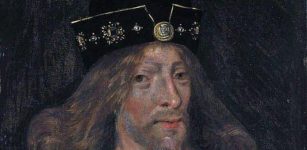 On This Day In History: King James I Of Scotland Was Assassinated – On Feb 21, 1437
News | Feb 21, 2017
On This Day In History: King James I Of Scotland Was Assassinated – On Feb 21, 1437
News | Feb 21, 2017 -
 Modern Pesticide Accelerates Corrosion Of Ancient Roman Bowl
Archaeology | Oct 6, 2022
Modern Pesticide Accelerates Corrosion Of Ancient Roman Bowl
Archaeology | Oct 6, 2022 -
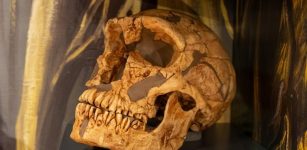 Why Is La Ferrassie Man A Unique And Famous Neanderthal?
Featured Stories | Oct 30, 2023
Why Is La Ferrassie Man A Unique And Famous Neanderthal?
Featured Stories | Oct 30, 2023 -
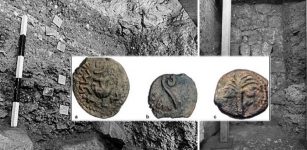 New Discovery: 2,000-Year-Old Monumental Street In Jerusalem Built By Pontius Pilate
Archaeology | Oct 21, 2019
New Discovery: 2,000-Year-Old Monumental Street In Jerusalem Built By Pontius Pilate
Archaeology | Oct 21, 2019 -
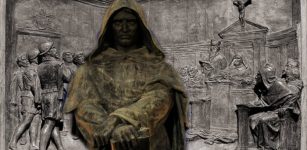 On This Day In History: Vatican Began 7-Year-Long Trial Against Giordano Bruno – On Jan 27, 1593
News | Jan 27, 2017
On This Day In History: Vatican Began 7-Year-Long Trial Against Giordano Bruno – On Jan 27, 1593
News | Jan 27, 2017 -
 Ancient Underwater ‘Lion City’ Rests Beneath The Thousand Island Lake
News | Feb 11, 2014
Ancient Underwater ‘Lion City’ Rests Beneath The Thousand Island Lake
News | Feb 11, 2014 -
 Death And Afterlife In Ancient Egyptian Beliefs – Death As Transition To Another Reality
Featured Stories | May 28, 2018
Death And Afterlife In Ancient Egyptian Beliefs – Death As Transition To Another Reality
Featured Stories | May 28, 2018 -
 Pyramid-Builders’ Cemetery With Coffins Discovered Near Giza, Egypt
Archaeology | May 6, 2019
Pyramid-Builders’ Cemetery With Coffins Discovered Near Giza, Egypt
Archaeology | May 6, 2019 -
 Unique Medieval Cog Shipwrecks And Artifacts Found In Sweden
Archaeology | Dec 3, 2022
Unique Medieval Cog Shipwrecks And Artifacts Found In Sweden
Archaeology | Dec 3, 2022 -
 Mysterious Mermaid Mummy Investigated By Scientists
News | Feb 22, 2022
Mysterious Mermaid Mummy Investigated By Scientists
News | Feb 22, 2022 -
 Amazing Discovery Of Ancient Roman Temple In The Netherlands Hailed As An Extraordinary Archaeological Find
Archaeology | Jun 20, 2022
Amazing Discovery Of Ancient Roman Temple In The Netherlands Hailed As An Extraordinary Archaeological Find
Archaeology | Jun 20, 2022 -
 How Did A Roman Sarcophagus End Up On A Beach Near Varna In Bulgaria?
Archaeology | Aug 6, 2024
How Did A Roman Sarcophagus End Up On A Beach Near Varna In Bulgaria?
Archaeology | Aug 6, 2024 -
 Comet Strike 13,000 Years Ago May Have Changed Human Civilization
Archaeology | Jul 6, 2021
Comet Strike 13,000 Years Ago May Have Changed Human Civilization
Archaeology | Jul 6, 2021 -
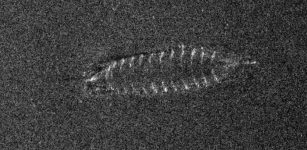 Sonar Images Reveal The Existence Of A 700-Year-Old Shipwreck At The Bottom Of Lake Mjøsa, Norway
Archaeology | Nov 22, 2022
Sonar Images Reveal The Existence Of A 700-Year-Old Shipwreck At The Bottom Of Lake Mjøsa, Norway
Archaeology | Nov 22, 2022 -
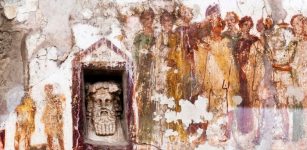 Artificial Intelligence Recreates Pompeii’s Ruined Ancient Masterpieces
Archaeology | Jul 8, 2023
Artificial Intelligence Recreates Pompeii’s Ruined Ancient Masterpieces
Archaeology | Jul 8, 2023 -
 Stone Toilet Of A First Temple Period Luxury Villa Reveals The Jerusalem Elite Suffered From Infectious Disease
Archaeology | Jan 4, 2022
Stone Toilet Of A First Temple Period Luxury Villa Reveals The Jerusalem Elite Suffered From Infectious Disease
Archaeology | Jan 4, 2022


